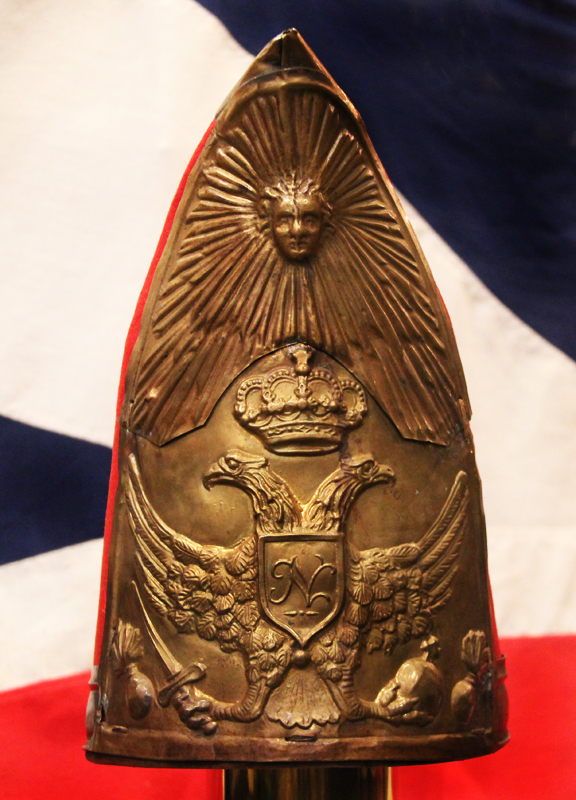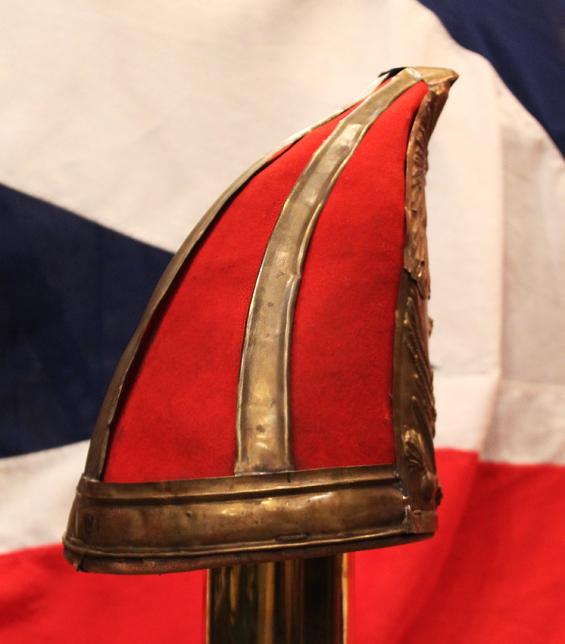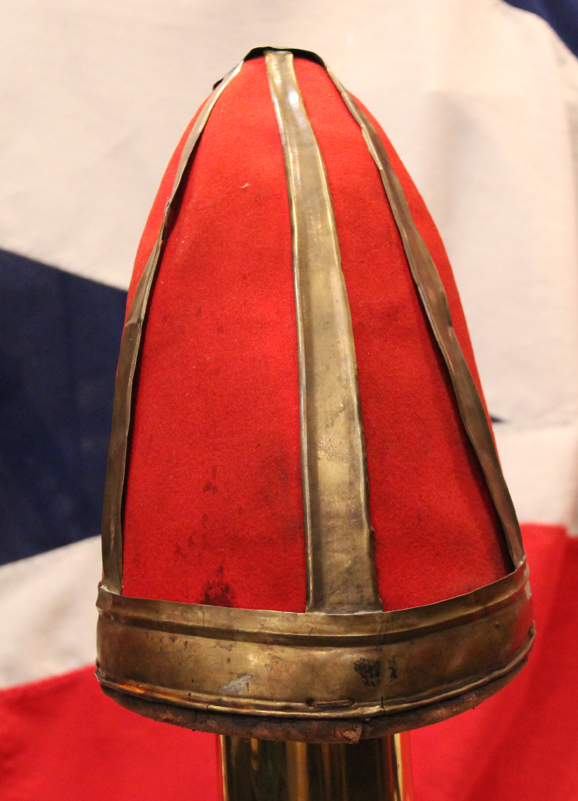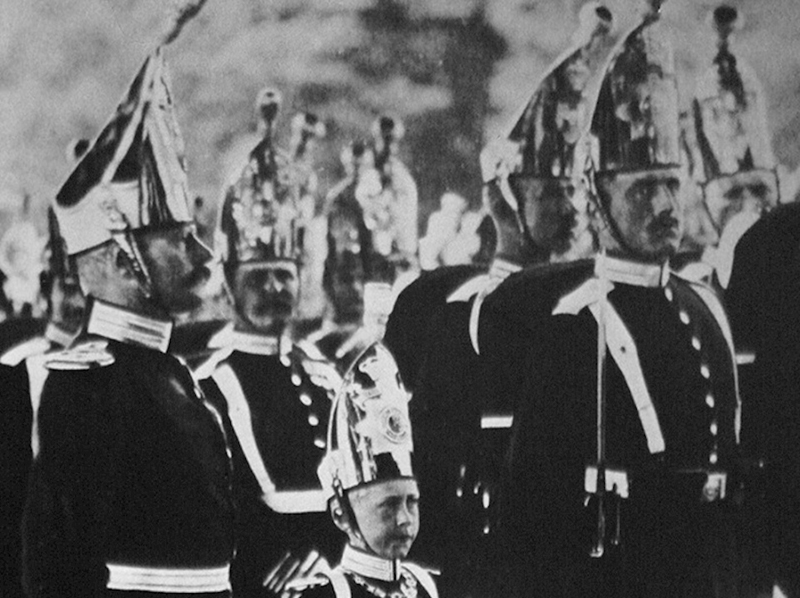A Fabulous, and Rare, 19th Century Imperial Russo-Prussian Grenadier's Mitre Cap The highly distinctive mitre cap was in use by grenadier regiments of three principle nations mostly British, Prussian & Russian Since the Mid 18th Century
A most rarely surviving form of European service helmet used by the Prussians & pre revolutionary Russians right though in fact to the early 20th century of WW1, yet they ceased to be used by the British in the end of the 18th century.
The mitre cap is an extraordinary interesting form of helmet that was both elaborate and decorative but also as a form of intimidation, to increase the perception of the height of a grenadier, yet still most functional for defence against sword cuts and slashes.
With the helmets construction, a combination of cloth and pressed metal, creating a most effective ‘crumple zone’ against a slashing blade impact upon the soldiers head. The rarest of all the surviving mitre caps is beyond doubt the British, as they were in use for the shortest period of time and were entirely made of cloth, and that material survives poorly over 3 centuries. However this example has survived beautifully.
The Russian and Prussian examples had elements of metal within the helmets stamped crest frontispieces and frame, and, they were in use for longer, some into the WW1 period. However, all surviving examples are now very scarce indeed, and complete examples are most especially rare. The 18th and 19th century examples being the most rarest of all.
The mitre cap, whether in stiffened cloth or metal, had become the distinguishing feature of the grenadier in the armies of Britain, Russia, Prussia and most German states during the late 17th and early 18th centuries. While Northern-European armies such as Britain, Russia, Sweden and various German states (perhaps most famously Prussia) wore the mitre cap, the southern countries, such as France, Spain, Austria, Portugal and various Italian states preferred the bearskin cap. By 1768 Britain too had adopted the bearskin. By the advent of the Napoleonic Wars, both mitres caps and fur caps had begun to fall out of use in favour of the shako. Two major exceptions were France's Grande Armee (although in 1812, regulations changed grenadier uniforms to those more similar to the ones of fusiliers, except in guard regiments) and the Austrian Army. After the Battle of Friedland in 1807, because of their distinguished performance, Russia's Pavlovsk Regiment were allowed to keep their mitre caps and were admitted to the Imperial Guard. In 1914 the Imperial German and Russian Armies still included a number of grenadier regiments. In the Russian Army these comprised the Grenadier Guards Regiment (L-G Grenadierski Polk) as well as the Grenadier Corps of sixteen regiments (plus an independent reinforced company of Palace Grenadiers, guarding the St. Petersburg Imperial residences). Five regiments of the Prussian Guard were designated as Garde-Grenadiers and there were an additional fourteen regiment of grenadiers amongst the line infantry of the German Empire. In both the Russian and German armies the grenadier regiments were considered a historic elite, distinguished by features such as plumed helmets in full dress, distinctive facings (yellow for all Russian grenadiers) or special braiding.
A grenadier derived from the word grenade, and was originally a specialized soldier, first established as a distinct role in the mid-to-late 17th century, for the throwing of grenades and sometimes assault operations. At that time grenadiers were chosen from the strongest and largest soldiers. By the 18th century, dedicated grenade throwing of this sort was no longer relevant, but grenadiers were still chosen for being the most physically powerful soldiers and would lead assaults in the field of battle. Grenadiers would also often lead the storming of fortification breaches in siege warfare, although this role was more usually fulfilled by all-arm units of volunteers called forlorn hopes, and might also be fulfilled by sappers or pioneers. A very similar, near identical example appears illustrated and described in the The Lyle Official Arms and Armour Review 1983, page 261
Code: 22034
3950.00 GBP










